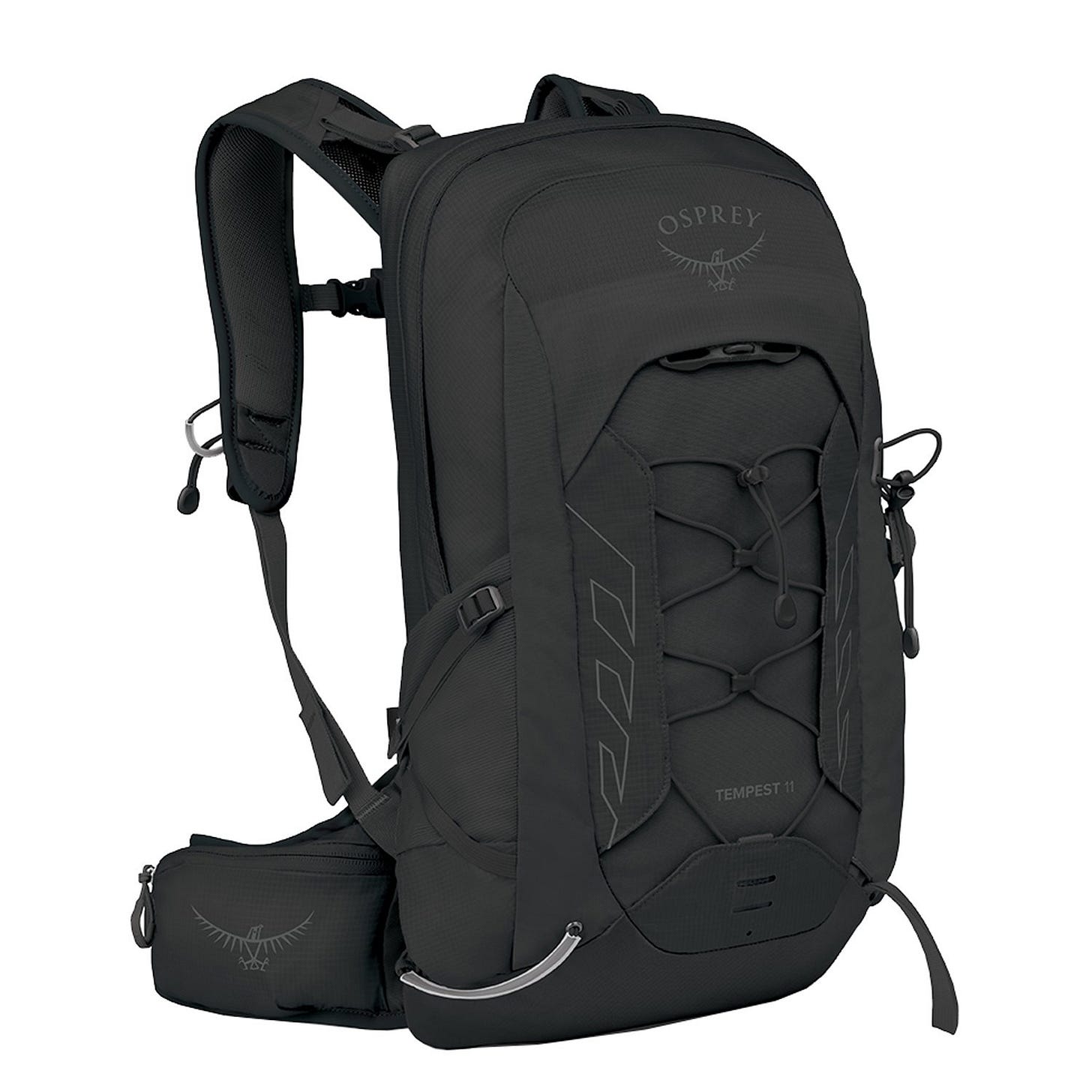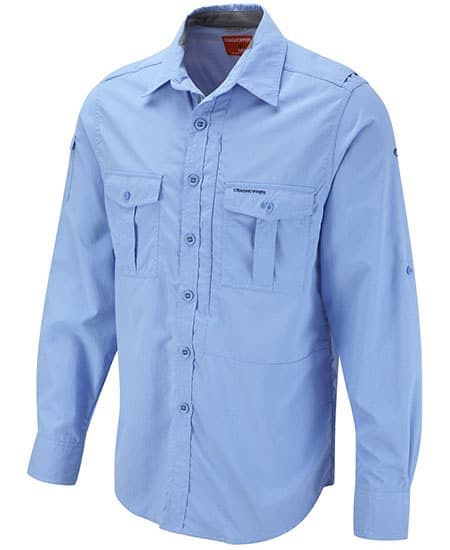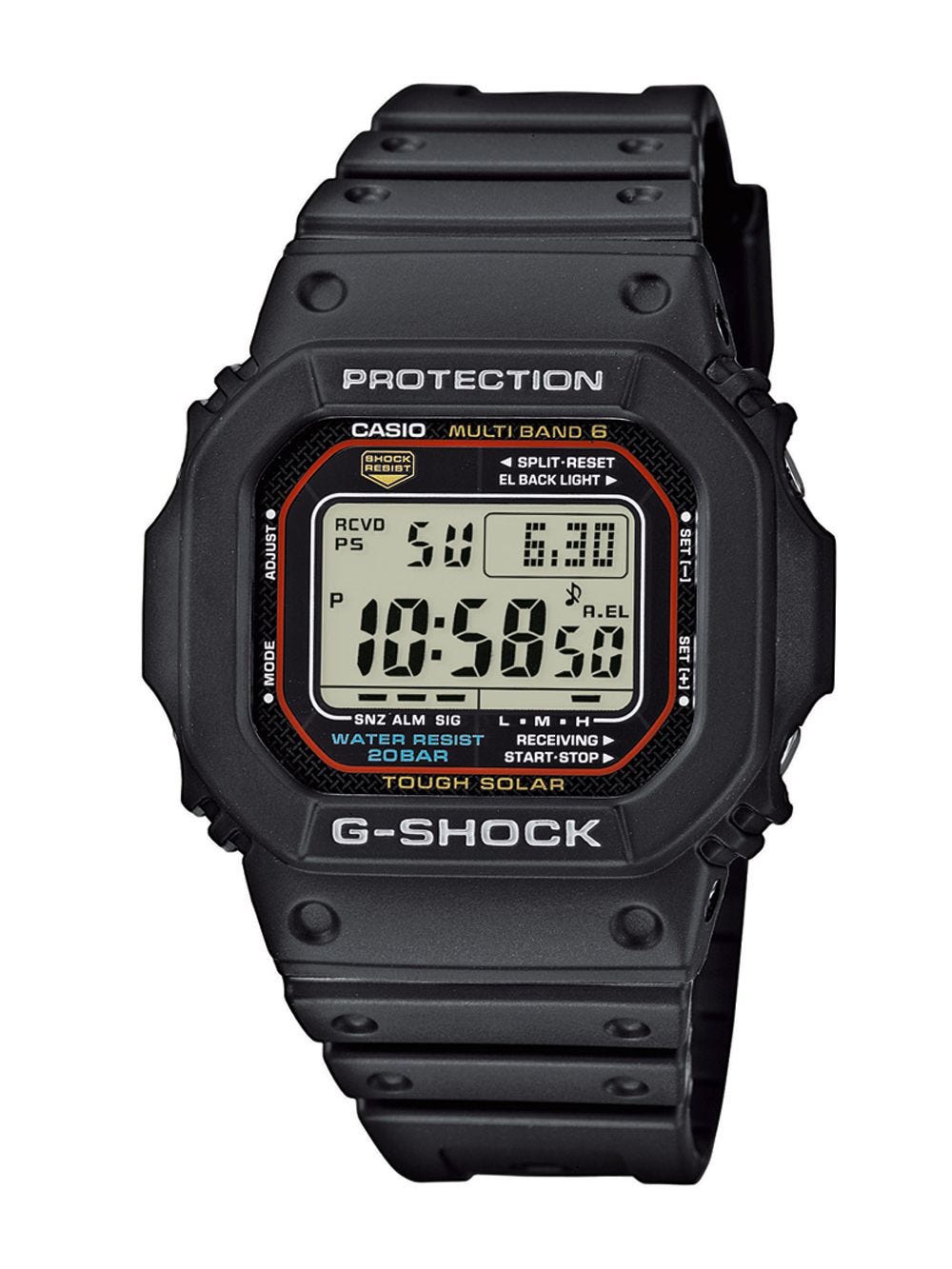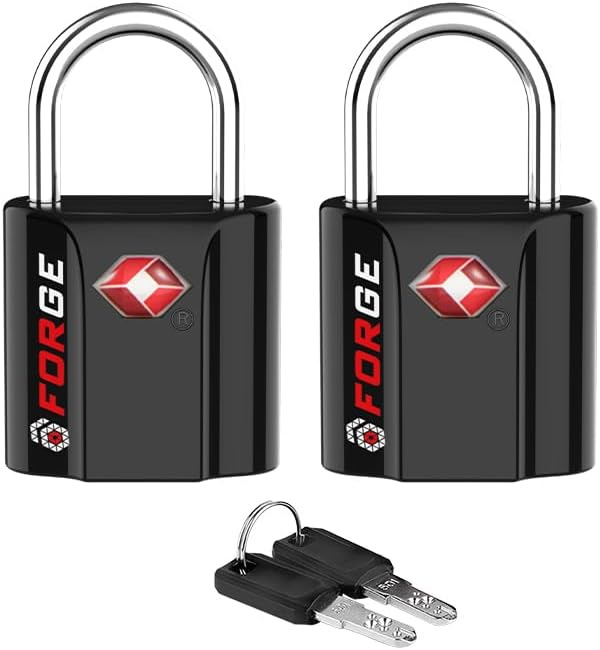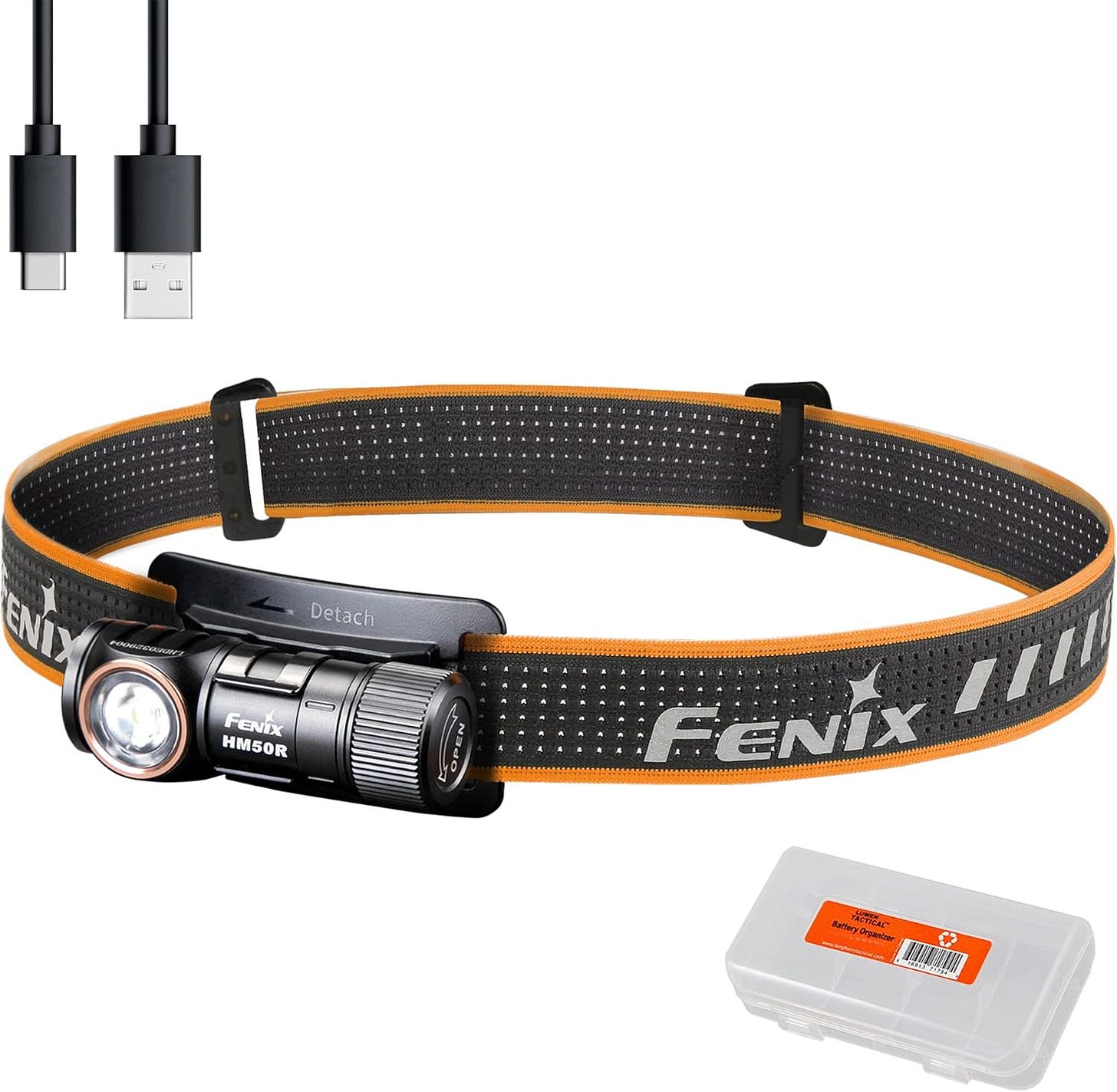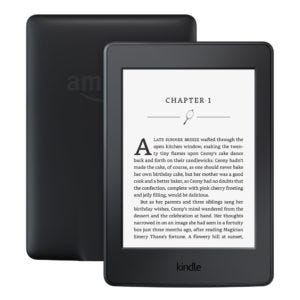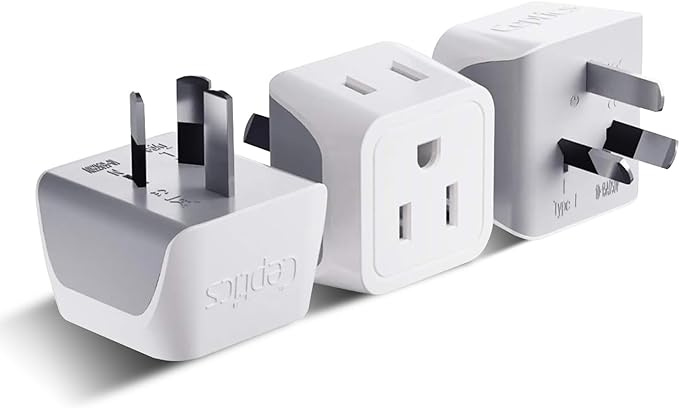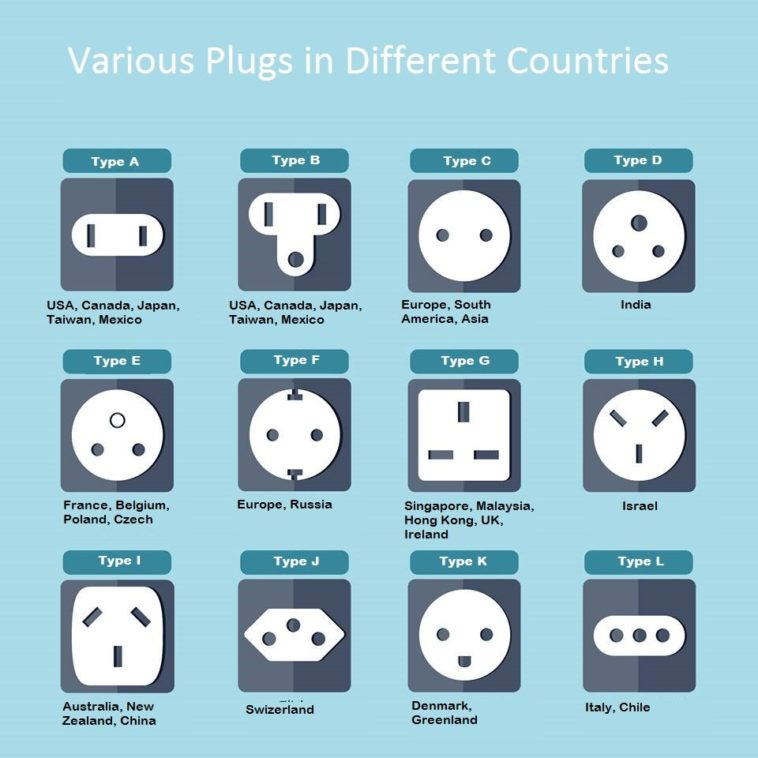When I was in my late twenties, I saved up money, quit my job, sold almost everything I owned, and bought a one-way plane ticket to the other end of the world.
The 18 months that followed made up one of the most exciting and adventurous chapters of my life. I traveled from hostel to hostel, crashed on couches, slept on beaches, planes, trains, and automobiles, worked half a dozen different jobs and hustles, learned how to surf, met friends and lovers, got into trouble, took thousands of photos (that will be posted in essays in the near future), and saw a great deal of the world.
My backpack was the single constant practical factor in my life for that year and a half. Wherever it was, that was my home, whether it was for a day or a month. Optimizing the limited amount of space it offered was as much a necessity as it was a sport.
This post lays out everything I’ve learned.
Breakdown
If you’re planning on backpacking for two weeks or longer, this is for you.
This list is based on an 18-month backpacking trip across countries with moderate to hot climates. I spent most of my time in Australia and Southeast Asia. If you’re planning on going to a place like Norway, obviously bring different clothes.
Everything on this packing list is 100% function over form and optimized for volume, weight, and efficiency.
If you have to take away one thing from this post, it should be: “travel light.” Everything you bring with you, you must physically carry, through rain and heat, in crammed buses and trains, on scooters and motorcycles.
Virtually every first-time backpacker brings way too much stuff, and ends up leaving things behind at hostels after lugging them along unused. If you follow this guide, you won’t have to.
Buy once, cry once. Everything you bring will get intense use. This is especially true if you’re going on a very long trip like I did. High quality gear is not cheap, but it’s worth it.
There’s a large secondhand market for barely used large backpacks. This can be a good option if you want to save money.
This was written from a man’s perspective, but it will work just the same for women with obvious tweaks.
Basics
Suitcase vs backpack
Your first question might be, why get a backpack instead of a suitcase?
That is a valid question, because suitcases are great. They come in all kinds of capacities, and their rectangular form factor allows for an efficient way of packing and storing. Their hard shell provides solid protection of its contents and prevents clothes from getting wrinkled. I am a fan of suitcases for city trips, business trips, and any outing where a car is the main form of transportation. When you go on an adventure-type trip, however, you will be walking on trails and rocky roads, taking buses and trains, and riding scooters and motorcycles to get from A to B.
The list below is a good rule-of-thumb overview in terms of practicality. “Backpack” here refers to a big backpack that goes into the checked luggage, not a day-pack.
Backpack
Adventure travel
Trekking and camping
Hiking
Travel by motorcycle
Travel by public transport
Hostel-oriented trips
Suitcase
Visiting a single location
City trips
Business trips
Cruises
Luxury travel
Travel by car
Hotel-oriented trips
Backpack size
Compared to the enormous suitcases people lug around every airport, even the biggest backpack isn’t that big. That is not necessarily a bad thing, because you’ll need to physically carry everything that’s in there, sometimes for hours.
Don’t buy the biggest backpack just because you can. You will always find a way to somehow fill it up.
The most important rule for backpacking: travel light.
Like suitcases, backpacks come in all shapes and sizes. From my personal experience, a capacity of 65 liters is more than enough for your typical freewheeling, hostel-hopping backpacking adventure. 55 liters would work even better for most people, as I also carried photography gear with me. Skilled, ultralight travelers can get away with 35-45 liters. I’ve seen it, I could also do it if I wanted to, but it requires more compromise than I would personally be willing to make.
For context, the average carry-on roller luggage is around 40 liters, and the huge expandable checked suitcases go up to 150 liters. So, 55-65 liters isn’t that much volume, considering everything for the entire trip must fit in there.
The goal is to carry as few items as possible, without compromising utility and convenience. There is no room for unnecessary stuff. Every single item you pack must serve a purpose.
The good news, traveling super light is liberating and comfortable if you do it right.
Full disclosure: this article contains some affiliate links.
Bags
Large backpack
The large backpack is your home base. It contains your clothes, toiletries, and other large items. My advice is to physically visit a store like REI, Bass Pro Shop, or Cabela’s, and try a bunch of them, preferably also with weight. Different brands and models fit different body types, and the differences in fit and shape are significant. Ask the salesperson for assistance and advice; they are usually enthusiasts themselves.
What to look for
If you are shopping for your large backpack, make sure you pay attention to the following features and elements.
Fit & Comfort
Adjustable torso length: Ensures the pack fits your height properly. Standard feature.
Padded shoulder straps and hip belt: Distributes weight evenly and reduces strain. Standard feature but implementation varies per brand and model.
Ventilated back panel: Improves airflow and reduces sweating. Not a standard feature, very nice to have.
Load lifters and sternum strap: Load lifters are adjustable straps that connect the upper part of the backpack’s shoulder straps to the top of the pack’s frame. These help stabilize the load and improve posture. Not a standard feature, very nice to have.
Access & Organization
Multiple access points: Look for a pack that allows access from the top and front at the very least. Bottom access makes a big difference in terms of convenience.
Removable daypack or lid: Useful for short hikes or errands without the full pack. Lack is not a deal-breaker.
Internal compartments/dividers: Helps separate gear (e.g., clean & dirty clothes). Very nice to have.
External pockets: Quick access to snacks, maps, or rain gear. Common feature.
Hip belt pockets: Ideal for phone, wallet, or small camera. Common feature, must-have.
Mesh side pockets: For water bottles or wet gear. Common feature.
Compression straps: Keeps gear compact and stable. Common feature.
Durability & Weather Protection
Reinforced frame or structure: Metal or composite frame for heavy loads. Very nice to have.
Weather-resistant zippers and seams: Keeps contents dry in light rain. Nice to have.
Rain cover included: Essential. If not included, be sure to buy one separately.
Lifetime warranty or good repair policy: Always a good indicator of high quality.
Utility & Versatility
Hydration reservoir sleeve: For water bladders. I personally didn’t use this, but you might, depending on your plans.
Bottom loops: Designed for trekking poles or ice axes. I hung my sneakers on them.
Bottom straps: To secure a sleeping bag, mat, or a tent. Pretty standard.
Expandable lid: Accommodates overflow gear. Bonus feature.
Reflective elements: Nice to have.
Smart Extras
Hidden valuables pocket: Discreet storage for passport or cash. Always useful.
Modular add-ons: Most brands have add-ons that integrate well with the big backpack.
Other Considerations
Weight of the empty pack: The lighter, the better.
Gender-specific or unisex fit: Some brands offer male and female versions of their backpacks. Worth looking into, depending on your build.
Common reputable brands (among others)
Osprey
Gregory
Deuter
The North Face
Patagonia
Arc'teryx
Thule
Fjällräven
Mystery Ranch
Mammut
Black Diamond
Kelty
My personal choice
The Gregory Baltoro 65 is my personal pick. It is sturdy, comes with a lifetime warranty, it’s well thought out in terms of layout and features, and it has won several design awards. Most of all, it is by far the most comfortable backpack I’ve tried.
Highlights
Vented metal-framed back panel.
Grippy silicone pad on the lower-back helps stabilization.
Clever suspension system makes the waist belt and shoulder straps automatically pivot into optimal position.
Access from the top.
Access from the front.
Access from the bottom. Very practical. Bigger deal than you think.
The main compartment has a separator that can be easily engaged and disengaged. I use it to separate my dirty and clean clothes.
One internal compartment can be detached and used as a mini-day pack.
Two large side-compartments. I use them for a GorillaPod tripod, a deck of playing cards, and things I pick up along the way.
Two compartments on top of the lid. Great for storing things you need to access frequently.
Hidden compartment under the lid for valuables. Passport goes here.
The lid is attached to the backpack with four adjustable straps. These can be extended in case your backpack is filled to the brim, or if you want to store something between the lid and the backpack, like a sleeping bag or roll-up tent.
Two pockets on the hip belt, one of them weather-sealed. Great for phone, wallet, and compact camera. Always in sight and reach; can’t be opened without you noticing.
Rain cover included. Crucial piece of kit, even if only needed once.
Stowable bottle holster.
Loops on the back to hook things on.
Two adjustable straps on the bottom that can be used to store a hammock/tent/sleeping bag.
I can’t say enough positive things about this backpack. It lived through 18 months of intense use and abuse without showing signs of serious wear. I expected it to be worn-out by the end of my trip, but it wasn’t. Probably the last large backpack I will buy in my life.
Daypack
It’s common to take a large and a small backpack when traveling long-term.
The Osprey Tempest, 11 liters
Advantages
Allows you to keep your valuables close to you. Big backpack=checked bag, small backpack=carry-on luggage.
Provides the option to carry things (food/drink/camera) during the day while you leave your big backpack at the hostel.
Handy for grocery shopping when staying in a hostel.
Disadvantages
Another thing to carry.
When not wearing it by itself, your daypack is stored inside the big backpack, strapped to the back of the big backpack, or worn on your chest.
A capacity between 10 and 20 liters is what you’re generally looking for. Don’t go bigger.
Rain covers
Having a rain cover is crucial for your daypack.
I can’t stress enough how it is one of the most important things to bring with you, even if you’ll only end up using it once. I ended up ruining one of my cameras when I was caught off-guard by a thunderstorm in the tropics without one of these things.
Almost all big backpacks come with their own rain cover. Small backpacks usually don’t, so get one.
Hanging travel toiletry bag
A hanging toiletry bag is a highly convenient item that proves itself every single day. Hostel bathrooms are often not very spacious nor conveniently set-up, but there is always something to hang a bag on. This particular one from Osprey folds up small and is big enough to hold all the essentials.
General toiletry bag tips
Putting your toothbrush in a travel tube helps keep both the toothbrush and toiletry bag clean.
A deodorant stick is a great space-saver compared to a can. Pick your favorite brand. I’m personally partial to Dr. Squatch. Their products have clean ingredients and I like the scents they offer. One of these will last you months.
Hostels generally don’t provide you with soap and shampoo like hotels. Body wash/shampoo bottles are large and not leak-proof. A busted shampoo bottle inside your backpack will ruin your day (I’ve seen it more than once). The solution: a good old-fashioned bar of soap and a waterproof container.
Travel tip but also a general tip: use a safety-razor instead of a multi-blade cartridge system. It’s a buy-it-for-life product; I have used the Merkur Mk34c for over 20 years now. Double-edge razorblades cost next to nothing and take up very little space. Be sure to try different brands to find out which ones are best for your beard and skin. I personally use Feather, which are among the very sharpest, as anything less sharp pulls on my very coarse beard. Gillette is my second choice and is generally a safe bet for most people. I can use Feather blades twice, while the Gillettes are done after one shave. It’s always a good idea to try a sampler pack to find out which is right for you. There’s a little bit of a learning curve, but you’ll save yourself a ton of money over your lifetime, and it achieves the cleanest, closest shave possible.
Shaving cream from a tube is cheap, lasts a long time, and takes up way less space than canned goo. I personally like Proraso’s offering from the green tube, but there are many other good ones.
Absolutely bring rubbers. Don’t roll the dice, no matter how drunk, high, or stupid you get—but you already knew that.
Other bags
Use laundry bags to organize your clothes within your backpack. They are a lot cheaper than packing cubes and take up virtually no space. I use them to group my shirts, underpants, socks, and other things. Laundry bags are also good at what they were designed for in the first place: protecting your clothes. This is useful, considering you will encounter plenty of heavy-duty washing machines that are hard on clothing.
Fold your clothes to the width of these bags, and roll them up. This is efficient in terms of space and lowers wrinkling.
A couple of waterproof pouches add an extra layer of protection to things like your phone, passport, and other valuables sensitive to water. They’re not expensive and don’t take a lot of space. Also effective against dust and sand.
Clothes
Optimizing this aspect of your gear will give you the biggest return on investment in terms of space, comfort, and utility. Versatility, durability, and weight are things to look for.
Roll up your clothes instead of folding them. It takes a lot less space and prevents wrinkles.
Merino Wool
I am a huge fan of Merino Wool. It is an incredible fabric for many different reasons, and its benefits especially shine during long-term travel.
Advantages vs cotton and regular wool
Active fiber that dynamically reacts to environmental changes
Keeps you warm when it’s cold
Keeps you cool when it’s warm
Lighter weight than wool and regular cotton
Not itchy
Mostly hypoallergenic
Color and shape retention second to none
Dries fast
Wicks away sweat
Odor resistant thanks to natural antibacterial properties
Durable
Incredibly comfortable
Offers good UV protection
Merino clothing can last four to five days before needing to be washed, which means that a handful of clothes can last you several weeks. Wearing the same clothes for several days is an inescapable part of the backpacker lifestyle. Thanks to Merino wool, you don’t have to reek while doing it.
Downsides? There is only one: the cost. This stuff is expensive.
Wash cold, air dry.
Underwear
Icebreaker Men’s Merino 150 Anatomica boxers
Easily the best underwear I own. Perfect fit and very comfortable. Five of these. They make other styles, as well. Other good brands are Merino Tech and Smart Wool.
Shirts
Icebreaker Merino wool T-shirts
You’ll be wearing these pretty much all the time. Three short-sleeves, one long-sleeve. Available in many different colors. I personally stick with dark blue and black. I like the 175 and 200 fabric weight, which is suitable for all climates. Also good for layering.
Merino wool dress shirt
One of these. Nice to wear instead of a t-shirt every now and then. I like it for warm weather because it protects my arms from the sun on hot days while still being breezy, and on cold days it’s good for layering.
Icebreaker Merino zip-up sweater
One of these. A very comfortable sweater that provides plenty of warmth, without adding a lot of weight and bulk to my backpack. I’ve worn this on every plane and bus ride, and around many barbecues and campfires when it gets cooler in the evening. You’ll want to go for the 260 fabric weight here. Perfect for layering. Expensive, but it’ll last.
Craghoppers Nosilife long sleeve shirt
One of these for very hot days. Many smart features, like a fold-up collar that protects your neck against the sun, drying loops, and a wipe for your (sun)glasses. It is 100% mosquito-proof and offers complete UV blocking, which makes it perfect for tropical/jungle environments and farm work. I was happy to have it in Australia.
The company also offers other clothes made of this patented nylon fabric. It doesn’t have all the benefits of Merino wool clothing, but it does serve its specific purpose well and it folds small and light.
Linen shirts
Two short-sleeved linen shirts for very hot weather.
Pants
Quick-drying hiking cargo shorts
Two of these (pick your favorite brand and color). Extremely lightweight, folds up very small, convenient pockets, quick-drying, and durable. Get the zip-off trouser version of these if you can find them; two in one, saving space.
Swimming pants
Essential. Get one that dries quickly.
Board shorts
Essential if you’re planning on surfing. Swimming pants don’t cut it.
Jeans
Don’t bring jeans.
Jeans are the very worst thing to take with you in a backpack. They’re very bulky and heavy, and they take forever to dry when they get wet. If you really, really must take a pair of jeans, only take one (but you really shouldn’t).
Footwear
Luna hiking sandals
These are “barefoot” sandals with an aggressive Vibram outsole found on hiking shoes. I wore these almost exclusively for a year and a half as my daily footwear, but also while trail running and during long hikes. They are very tough and waterproof. People run ultramarathons on these things.
Wearing this type of sandal is, like the name implies, as close to walking barefoot as you can get. While most footwear is advertised for its support and cushioning, this is the complete opposite. These sandals are essentially a flat, tough, grippy layer between your feet and the ground. It takes getting used to because you will now utilize all the muscles in your feet for balance and movement, which means you will be sore in the beginning.
There are upsides that make it worth it: improved strength, reduced strain on knees, hips, and lower back, improved posture, and lower risk of injury. If you go this route, I recommend buying them at least a month beforehand and walking around on them for an hour every day before you do it with a heavy backpack.*
I like flip-flops a lot, too, but these are more versatile, as they also replace hiking shoes and running shoes.
*Your mileage may vary, not medical advice, yada yada.
Sneakers
Sneakers are lightweight and comfortable. If you’re planning on picking up a job during your travels, you’ll probably be required to wear closed shoes. It’s also considerate to fellow passengers to wear them on a plane, bus, or train, because no one wants to see or smell your feet. Pick your favorite brand.
Running socks
Five pair of these because they take little space, and it’s nice to have clean socks on your feet. I like Asics, but Adidas and other sports brands make them, too. They’re all good, pick your personal favorite. I prefer cotton over synthetic.
Merino wool socks
Merino wool socks by Smartwool.
Good for colder days and flying. One pair of these. Warm and comfy.
Hiking shoes
Hiking shoes, as great as they are, are not necessary in most cases. Even if you find yourself in a situation where they’d be nice to have, their enormous bulk and weight are too much of a downside. Unless you’re going on a serious hiking trip that requires you to wear them at least 80% of the time, leave them at home.
And, if you got the Luna sandals, you don’t really need them.
Travel accessories
Sunglasses
If you plan on visiting a sunny country, investing in a decent pair of sunglasses is definitely worth the money. My personal choice is Ray-Ban’s RB3183. Served me well for over a decade now.
If you’re looking for something less pricey, Polaroid is a great option. Can’t go wrong with anything they make, and you won’t be paying a price premium for the brand name. If you can pull it off, BluBlockers are glorious and hilarious.
Polarized sunglasses are always worth the price premium.
Travel watch: Casio G-Shock
A watch is the only accessory/jewelry that a man can truly wear besides a wedding ring. Don’t be the guy who checks the time by looking at his phone. Wear a watch like a man.
The Casio G-Shock series is the best watch for a backpacking adventure. They are affordable, virtually indestructible, and come in a huge variety of different styles and feature-sets. They are worn by astronauts, marines, Navy-SEALS, and other ass-kickers and bad-asses. Prices range from around 30 to 200 bucks, which means you won’t get robbed in the street for them.
Solid, accurate timepieces with an undeniable cool-factor. Watch connoisseurs don’t hate on them, either.
Pretty much all G-Shocks show the date, have an alarm, illumination, and a world clock. If you want something for a specific purpose, there are models that show tides, moon phases, altitude, barometric pressure, and more. Surfers, pilots, boaters, outdoorsmen, and climbers love them for these features.
My G-Shock never missed a beat. It survived extreme cold (-20 °c/-4 °f), extreme heat (45 °c/113 °f), salt water, and dusty environments.
BUFF neck gaiter
One of the most versatile objects to bring. You will use this almost every day you’re out and about. These things are legendary among seasoned travelers.
I usually wear it as a do-rag when I’m in sunny places. That way, it protects the top of my head, as well as my neck. The Rambo-headband-option is another favorite. Go for the UV-protection one.
TSA luggage locks
Essential. You don’t want to leave your bag with your passport and valuables out in the open. Most hostels have lockers in the rooms, but you’ll need to put your own lock on them. I bring two with me; one for each backpack. Good to lock zippers shut on your small backpack, too.
Be sure to get TSA-approved locks to prevent airport security from destroying your luggage to inspect it. Look for the red diamond logo.
These locks by Forge are my personal choice.
Heavier duty than most others.
Locks in the TSA agent’s key when they’re open until they’re closed again, which forces the TSA agent to re-lock your luggage after they’re done. They often don’t bother doing that, because they don’t care.
Has an indicator that shows the lock has been opened with the TSA master key. That way you will know if your luggage has been gone through.
Lifetime warranty.
Good quality, and the price is right.
Fenix Headlamp
Headlamps have several advantages over flashlights. Having both hands free while using it is the biggest one, especially when you’re carrying things around, setting up a tent, or trying to navigate a campsite or hostel dorm in the middle of the night. Another advantage is the light shines exactly where you’re looking.
I use the Fenix HL50. It’s small, lightweight, waterproof, and durable. There are newer ones with a built-in lithium battery and USB-C charging. I’d get that if I had to buy a new one today. The HM50R v2.0 is the spiritual successor.
Considerations
300 lumen is more than enough for basic use. I use the medium brightness setting on my light the most, which puts out about half of that.
700 lumen is extremely bright, which can be useful if you plan on going trail running or wildlife spotting at night.
Going far beyond that mostly makes things more expensive and bulkier.
Red light mode is very nice to have to preserve your night vision and to prevent bothering others if the situation calls for it.
Leatherman multitool
Leatherman makes heavy-duty multi-tools that don’t take up much space.
This is a useful and versatile piece of gear that gets plenty of use. I use the can-opener, bottle-opener and the knife the most, but the screwdriver and pliers have also come in handy.
Bungee clothes line
More useful than you think.
Many hostels have washing machines, but no dryers. Besides, when you have Merino wool clothes, you don’t really need a dryer because they air-dry in no-time.
This travel washing line doesn’t require pegs, as you put a corner of your clothes through the loops of the line. It is also elastic, which makes it versatile. I’ve set it up many times between bunk beds and locker cabinets. Allowing others to use it to dry their clothes is a nice way to make some friends. That’s always nice.
Microfiber travel towel
You need a towel, as hostels generally don’t provide them. In the rare case they do, you’ll need to pay for it, which adds up.
Microfiber towels are perfect for backpacking. Besides being small and lightweight, they are ultra-absorbent, dry ten times faster than cotton, and have antibacterial qualities. The material is also very strong. If you wring it out hard after use, it’s almost completely dry right away.
A must-have. Get a medium or large size. One is enough.
LifeStraw personal water filter
A LifeStraw allows you to safely drink water from any source, including rivers and creeks. The filter lasts for 4000 liter/1000 gallon, which should be enough to last you around three years of daily use. It’s not safe to drink tap water in many countries. Water bottles are ubiquitous and cheap, but it’s always good to have options.
Doesn’t cost much, takes very little space. Better to have and not need than the other way around.
Sleep mask
A sleep mask is something you’ll use every night. Be sure to get one that wraps all around your head to also muffle your ears. Silk is a nice material to pick.
There’s always snoring, talking, and midnight drunk arrivals among other things going on in hostel dorms. All these things are part of the experience, but sometimes you just want to sleep.
Also great to have for overnight flights and bus rides.
Neck pillow
Nice for flights, bus rides, and impromptu naps. I got a small, simple one that can be folded inside-out into a regular rectangular pillow. Bought it at an airport, forgot the brand.
Mini first aid kit
Always handy to have. Cheap to buy, and light and small. Add a bottle of liquid iodine and your favorite headache pills, too.
Gadgets
Amazon Kindle
When you’re traveling, especially backpacking, there will be a lot of downtime. Plane rides, bus rides, train rides… you name it. An e-reader is a fantastic travel companion for this.
Purists will say it’s not the same as reading a real book. You won’t have the satisfaction of flipping the pages, smelling the ink, and trading/sharing books with others. Sure, but I also like being practical. There’s no device out there that is this small and light, and yet can keep you entertained for several weeks on a single battery charge. E-ink is a great invention and easily beats reading on a phone/tablet screen. No glare, no reflections, and perfect readability in bright sunlight as well as in the dark thanks to the built-in light.
If you’re not reading books, it’s time to start. There are few better things to do with your free time.
Unlocked smartphone
An unlocked phone can take any SIM card or eSIM. If you got your phone through a cell service provider, chances are it is locked to their network and thus will not work with foreign SIM cards.
For long-term travel, it’s a good idea to get a local SIM card for the country you’re in, because it’s always cheaper. Especially data roaming can get expensive fast.
With all that said, aim to spend as little time as possible looking at your phone when on a trip like this.
Power adapter
The one that came with your phone most likely handles 100V/60Hz–240V/50Hz, which makes it usable worldwide. But double check to be sure.
Travel plug adapter
Chances are you won’t be able to plug in your power adapter once you cross an ocean. This is where a plug adapter comes in.
I prefer the simple ones like pictured here over the all-plugs-of-the-world-in-one types. Those are big, which can prevent them from being used alongside another plug. They are also heavy, which can make them fall out of a worn wall-mounted socket. Keep it simple (and cheap). Just be sure to buy the right type for your destination.
Powerbank
Not absolutely necessary, but handy to have. I like the rugged ones from Elecom. 5000mAh is a good capacity/size & weight trade-off.
Even though the world is moving toward the USB-C standard, a multi-adapter cable is useful. If not for you, helpful for others around you with older phones or other gear.
Laptop
Should you bring a laptop?
Probably not.
Laptops are bulky, heavy, vulnerable, and expensive. Your phone does pretty much everything you need. You can always find an internet cafe or library with public PCs if you need to do a lot of typing.
I personally did take a laptop because of my photography/web-development business, as it helped sustain me financially. If you’re not doing the digital nomad thing, don’t do it. It was a burden the entire time I didn’t use it. Even though it was an ultrabook (Lenovo Thinkpad X-series), it was still the biggest thing I had with me.
Tablet
See: laptop.
Souvenirs
Souvenirs are always fun to buy along the way, but they take up space and add weight. If you’re on a very long trip, consider shipping them to friends or family who can hold on to them for you. Sea mail is great for this, as it’s very cheap. It is significantly slower than airmail (several weeks vs days), but I never saw that as an issue.
In conclusion
The items listed here were pretty much all my possessions for 18 months, and it never felt like I missed anything. It was surprisingly liberating and comfortable to not own (and think/worry about) a lot of physical objects. Life was simple in a good way in that area.
Sure, there were times I missed my comfortable bed, couch, kitchen, and desk. All those things are great, but I ultimately did just fine without them. I believe it’s good to know what that feels like, as a life-experience.
Most of all, I hope this list will nudge you towards embarking on an adventure like this if you’re thinking about it. Not knowing how to pack is off the list of excuses now.
I have never regretted doing this for even a second.




